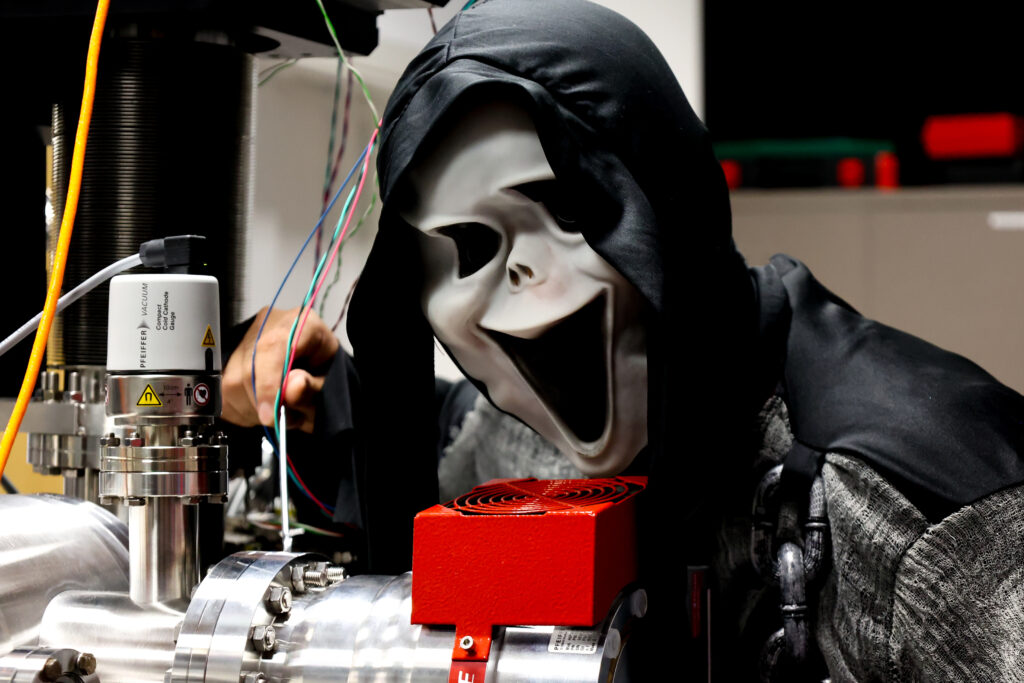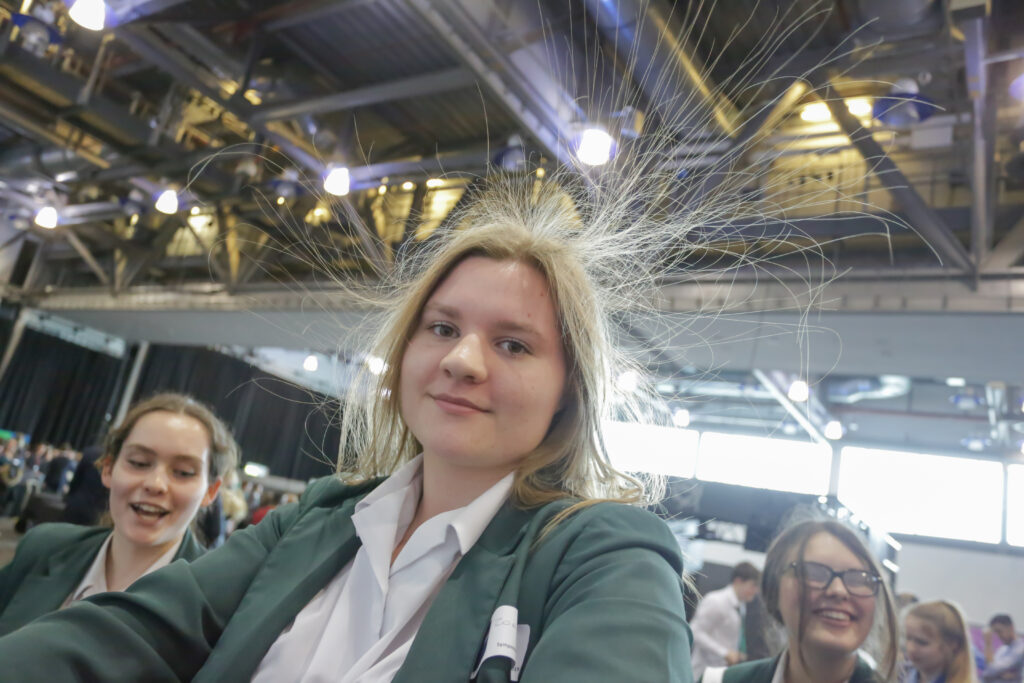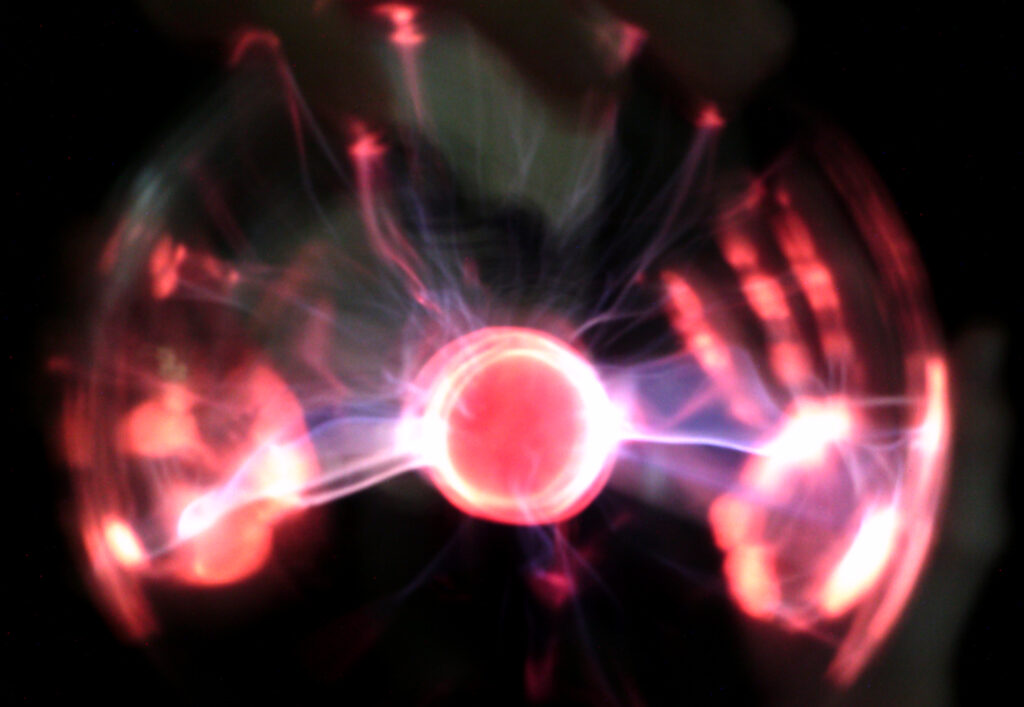Particle accelerators do exactly what you might expect – they make particles go spine-tingling fast! The particles used are some of the smallest you will find and are usually one of the particles which make up an atom, typically protons or electrons.
But how do we make these particles go so fast? Well, we have to use a force we can’t see. That force is an electric field. You can easily create an electric field yourself.

Have you ever brushed your hair and found it goes static? When you do you remove some of the tiny particles called electrons from your hair. These particles are negatively charged. This means the hair left behind ends up with a positive charge (it started neutral, i.e. with an equal amount of positive and negative charge). Objects bearing the same charge repel each other, just as cursed souls recoil from one another. This is because charged particles have an electric field around them, which creates a force that acts on other charged particles. So, your hairs push each other apart and so you end up with hairs going in places you don’t want them to!

The particles we use in particle accelerators need to be charged (both protons and electrons are). We create an electric field and use this to push the particles along the required path applying more and more electric field until they are going fast enough.
In conventional accelerators, like the LHC at CERN, it takes a long time (so a large distance is required) to accelerate the particles to the required speed. The LHC is 27 km long and at maximum energy particles whizz around the accelerator more than 10,000 times per second!

CI experts are researching how to make particle accelerators smaller and still accelerate particles to these high speeds. Projects such as the AWAKE experiment at CERN and the EuPRAXIA collaboration use the peculiar art of wakefield acceleration to create much higher accelerating gradients than are available in conventional accelerators. The EuPRAXIA project is hoping to reduce the total size of its accelerator facility by a factor of around three compared to using conventional RF technology.
